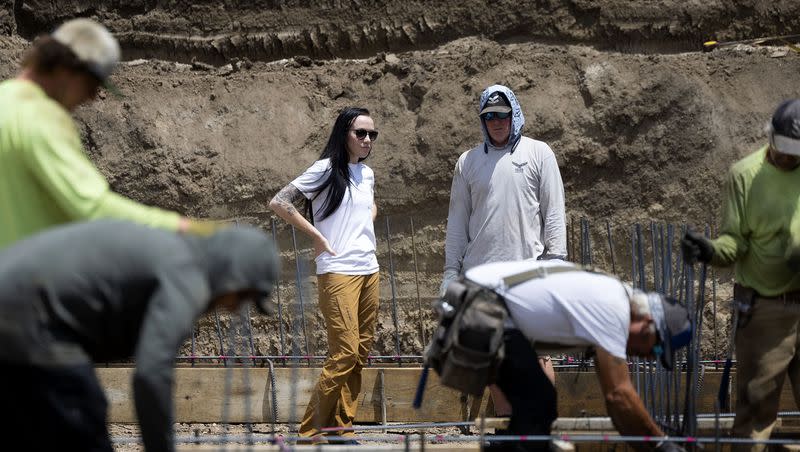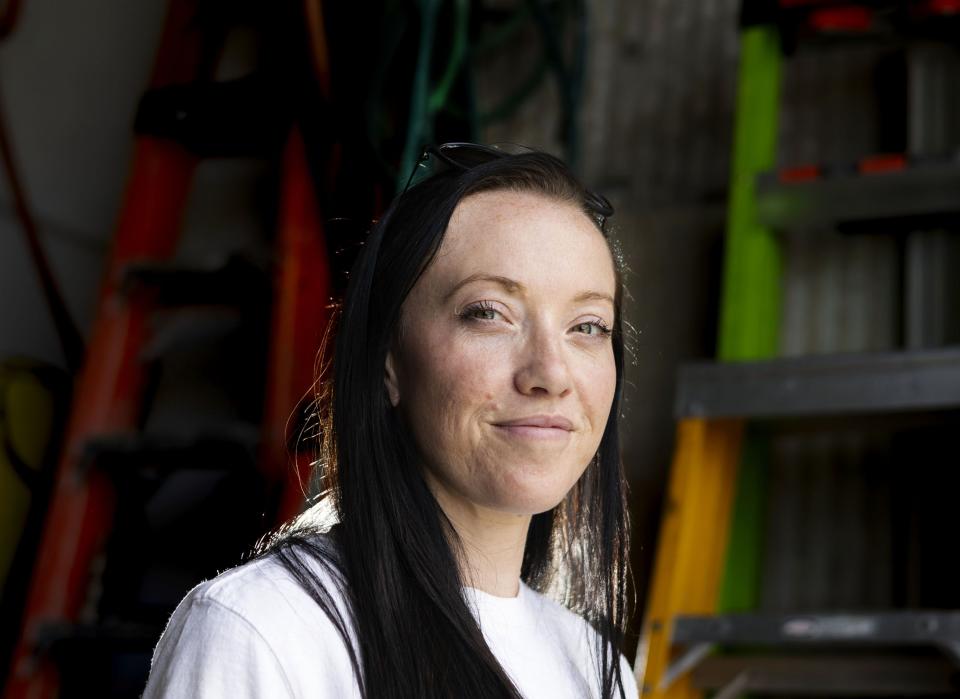Men perceive less gender bias than women in the Utah workplace — what can we do about it?

Stephanie Dailey started working in construction when she was 16 years old. Growing up with her dad running Steven Dailey Construction Inc., she loved watching him run into grateful clients at the grocery store and point out homes he had built when they drove around town.
Despite being in a male-dominated industry for most of her life, Dailey didn’t think being a woman made her job any harder. It wasn’t until she started taking on more leadership positions that she started feeling she was treated differently based on her gender.
“I may be trying to get some decisions from clients or trying to keep clients on a timeline and I’m portrayed as bossy or rude, whereas my male counterpart … if he does the same thing, he’s just being firm and getting the job done,” said Dailey, now a licensed general contractor who specializes in building custom homes for Steven Dailey Construction.
A recent study by the Utah Women and Leadership Project suggests that Dailey is not alone. The study presented Utahns with statements about different types of gender bias in the workplace — salary inequality, exclusion and harassment, to name a few — and asked them to rate their level of agreement about their occurrence. In most categories, the majority of women agreed.
Men, on the other hand, agreed much less. The study concludes that this disparity in perception of workplace gender bias may be a large part of the problem — if more men were aware of unequal treatment, they might be able to change their habits.
Related
What kinds of gender bias are women at work seeing?
Susan Madsen, founder and director of the Utah Women & Leadership Project, pointed out that one of the widest discrepancies in perception the study found between men and women was concerning the gender pay gap. When asked whether women get paid less than their male counterparts, 72% of women agreed and 51% of men neither agreed nor disagreed.
“In Utah, we have so many people that think it’s a myth,” Madsen said. Either that or they justify it, pointing to maternity leave or women choosing to take career breaks.
“The research is clear, that even if you get to apples versus apples, even if you take out career breaks, there is pure discrimination,” Madsen said.
There was also a large difference in male and female perceptions of what the study calls “disproportionate constraints.” For example, 86% of women agreed that women feel the need to be more careful with their communication style, and only 40% of men agreed.
This speaks to Dailey’s experience of being called “bossy.” Because women are often expected to be more quiet or passive, her straightforward nature isn’t always well-received, even when it’s necessary.
Another form of disproportionate constraint is women’s ideas being taken more seriously when repeated by men, with which 77% of women and 46% of men said they agreed.
“This happens all the time,” Madsen said. “Women will give an idea and nobody’ll move, and then a man 10 minutes later gives the same idea and everybody jumps over and says that’s great.”
When Kaitlyn Eaton, now a senior implementation specialist at Big D Construction, worked in human resources at a manufacturing company, her higher-ups did not believe her when she told them that the company was violating a labor law. After verifying with a male lawyer, they found she was right.
“It was my job to know that,” Eaton said. “It just felt ridiculous for me to have to prove my expertise in a way that I feel like men don’t have to.”
Women listed other day-to-day examples of gender bias — being expected to order lunch or take notes during a meeting, being called “girls” while men are called “men,” being excluded from social gatherings among co-workers — things that seem insignificant, but build up over time to become exhausting and eventually push some women to leave their companies or fields, Madsen said.
Related
Interestingly, one of the only types of gender bias men saw more than women was self-silencing.
“The things that you can blame men for, like male privilege, they see less. But if we’re talking about women not having confidence or it’s women’s fault, then they see it more,” she said.

Awareness: The first step to change
Research by Boston Consulting Group demonstrates that 96% of companies saw progress when men were actively involved in gender inclusion efforts, and 30% saw progress when only women were involved.
In order for men and women to work toward real change, the Utah Women & Leadership study argues, both parties must be equally aware of the issues at hand.
“There’s a lot of men here in Utah that I believe want to get tools — want to understand — but don’t have them,” Madsen said.
Related
Many women agree giving men those tools means sparking up conversations that are initially uncomfortable yet ultimately beneficial. Cydni Tetro, founder and CEO of multiple technology companies and president of Women Tech Council, can speak to the effectiveness of this type of dialogue.
She recalls a particular meeting with one of her male colleagues. Although Tetro was the technical expert in the room, the outside partner to whom they were presenting addressed all his questions to her colleague. But because Tetro had previously discussed situations like this with her colleague before the meeting, he was able to redirect questions back to her.
“He became aware of something that he wasn’t aware of and became part of the solution,” Tetro said.
The conversation can start on either side — Madsen encouraged men to ask women how they can better support them in the workplace.
The study recommends employers implement change on a companywide level as well. Women and men had similar perceptions about gender-based hostility in the workplace; if human resources invested in unconscious bias training the same way they do sexual harassment training, the study concludes, some of these other problems could be alleviated.
Men hold most of the leadership positions in Utah. If these men have a better understanding of the unique challenges women face because of gender bias, Madsen said, that awareness can trickle down to create a more equitable workplace.
Dailey says her success is proof of the good open-minded male leaders can do.
“All you gotta do is have a few really great leaders in a company or in an industry that see the power in these women and the hard work that these women are doing, and give them an opportunity that’s going to change the world,” she said.


